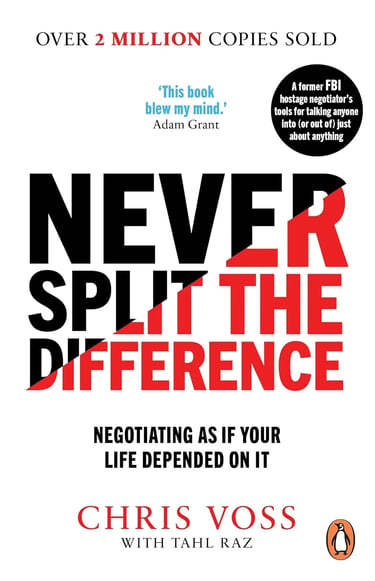Labelling Emotions, using FBI Tactics in UX Design
RESEARCH
Picture this: You’re in the middle of a heated design critique. Stakeholders are frustrated, team members are defensive, and the atmosphere is thick with unspoken tension. You can feel the project teetering on the brink of disaster. Now, imagine having the ability to cut through that tension, acknowledge the underlying emotions, and steer the conversation towards productive problem-solving. This isn’t a superpower – it’s the art of labelling emotions.
Welcome to the final instalment of our series on transforming your UX design process with FBI negotiation tactics. In our previous articles, we explored how active listening and mirroring can uncover hidden user needs, and how calibrated questions can drive innovative solutions. Today, we’re diving into the third technique from Chris Voss’s negotiator playbook: labelling emotions.
The power of emotional intelligence in UX design
In high-stakes negotiations, acknowledging emotions can be a game-changer. FBI negotiator Chris Voss emphasises the power of “labelling” in “Never Split the Difference” as a technique to build rapport and diffuse tension. But how can this approach transform your UX design process?
Labelling emotions: The secret weapon of empathy
Labelling involves verbally acknowledging the emotions that the other person is experiencing. It’s about identifying and articulating feelings, often prefaced with phrases like “It seems like…” or “It sounds like…” This technique demonstrates empathy and encourages open communication.
In UX design, emotion labelling can be your secret weapon for building deeper user empathy, resolving conflicts, and creating more emotionally compelling designs. Let’s see how this technique plays out in different UX scenarios:
Scenario 1: The user testing session
You’re conducting a user testing session for a new healthcare app. As the user, Mark, navigates through the interface, you notice his brow furrowing and his clicks becoming more aggressive. Instead of asking, “Is something wrong?”, you use emotion labelling:



“It seems like you’re feeling frustrated …”
“It seems like you’re feeling frustrated with this part of the app.”
Mark sighs and responds: “Yes, I am. I’m trying to find where I can view my test results, but there are so many options and menus. It’s overwhelming, and I’m worried I might miss something important.”
This response not only confirms the usability issue but also reveals the emotional impact – frustration and anxiety. You dig deeper:
“It sounds like you’re concerned about potentially missing critical information.”
Mark nods: “Exactly. When it comes to health stuff, I want to be sure I’m seeing everything I need to. Maybe if there was a dashboard that summarised all my recent results and upcoming appointments, that would help.”
By labelling Mark’s emotions, you’ve uncovered not just a usability issue, but also the emotional needs driving it – the desire for clarity and peace of mind in managing one’s health. This insight could lead to design solutions that not only improve navigation but also address the underlying emotional needs of users.
Scenario 2: The stakeholder meeting
You’re presenting design concepts for a major website redesign. The marketing director, Sarah, has been quiet throughout the presentation, but her body language suggests she’s not happy. Instead of ignoring it or asking her directly what’s wrong, you use emotion labelling:
“It seems like you have concerns …”


“Sarah, it seems like you have some concerns about these concepts.”
Sarah straightens up: “Well, yes. I appreciate the work that’s gone into this, but I’m worried that this new design doesn’t showcase our products as prominently as our current site. We might lose sales.”
By labelling Sarah’s emotion (concern), you’ve opened the door for her to express her reservations constructively. You continue:
“I understand. It sounds like you’re anxious about potential impact on sales performance.”
Sarah nods: “That’s right. We’ve worked hard to build our brand, and I want to make sure we’re not losing that in the pursuit of a sleeker design.”
This exchange has revealed the underlying concern – balancing brand prominence with modern design principles. You can now work with Sarah to find solutions that address both the need for a fresh, user-friendly design and the business requirement of effective product showcasing.
Scenario 3: The design team conflict
Your design team is divided over the direction of a new feature. Some members are pushing for a cutting-edge approach, while others advocate for a more conservative design. The discussion has become heated, with team members talking over each other. You decide to use emotion labelling to de-escalate:
“It seems like there’s a lot of passion in the room about this feature. It sounds like some of you are excited about pushing boundaries, while others are concerned about user adoption.”
This labelling of both emotions (excitement and concern) acknowledges the validity of both perspectives. The team quiets down, and one of the designers responds:
“You’re right. I’m excited about the possibilities of this new approach, but I guess I’m also a bit anxious about how users will react.”
Another designer chimes in: “And I’m worried about alienating our existing users, but I also don’t want us to fall behind our competitors.”
By labelling the emotions in the room, you’ve shifted the conversation from a heated debate to a more nuanced discussion of balancing innovation with user needs. This opens the door for a more collaborative problem-solving approach.
The impact on your UX process
By incorporating emotion labelling into your UX toolkit, you’re not just designing interfaces – you’re crafting emotional experiences. This approach leads to:
Deeper user empathy, uncovering not just what users do, but how they feel
More effective conflict resolution in team and stakeholder discussions
Designs that address both functional and emotional user needs
Stronger relationships with team members, stakeholders, and users
From negotiation to navigation
Emotion labelling isn’t just for FBI negotiators defusing high-stakes situations. It’s a powerful tool that can transform your UX design process, helping you navigate the complex emotional terrain of user needs, team dynamics, and stakeholder expectations.
As you integrate this technique into your work, you’ll find yourself not just solving usability issues, but addressing the deeper emotional needs of your users. You’ll be navigating your way to better design, one emotion at a time.
Remember, like any skill, effective emotion labelling takes practice. Start by trying to identify and label emotions in your next user testing session or team meeting. Pay attention to the responses you get – you might be surprised at how quickly tensions can dissipate and how much deeper your insights become.
Bringing it all together
As we conclude this series on FBI negotiation tactics in UX design, let’s recap the three powerful techniques we’ve explored:
Active Listening and Mirroring: To uncover hidden user needs
Calibrated Questions: To drive innovative solutions
Labelling Emotions: To enhance empathy and resolve conflicts
Each of these techniques, drawn from the high-stakes world of FBI negotiations, has the power to transform your UX design process. By incorporating them into your work, you’ll uncover deeper insights, drive more innovative solutions, and create designs that resonate on both a functional and emotional level.
So, are you ready to negotiate your way to better UX design? The floor is yours – go forth and design with the precision of an FBI negotiator and the empathy of a UX master!
More FBI Tactics for UX Design
Active Listening and Mirroring: Uncover user needs like never before.
Calibrated Questions: Transform your discovery phase and stakeholder management.
Get the book
Get your own copy of the book that inspired this series “FBI Tactics for UX Design”.


Discover the groundbreaking negotiation techniques that revolutionised FBI hostage situations, now applied to UX design. Get your hands on the bestselling book that inspired this eye-opening series and transform your approach to user experience!”
From Amazon
Join the conversation
Visit my LinkedIn post: Labelling Emotions: FBI Tactics for UX Design [3/3]

